When deciding when it’s the best time to climb Mt Kilimanjaro, you first have to ask yourself a couple of questions. What is my experience/fitness level? What is my budget? What do I want from my Kilimanjaro climb? What route do I intend to take? Ultimately, the best time to climb depends on all these factors and how they relate to weather, safety, and crowds.
July-August-September and January-February are the two main climbing seasons. These times correspond to summer and Christmas holidays with ideal climbing weather, but they are not the only options.
Mt Kilimanjaro Weather
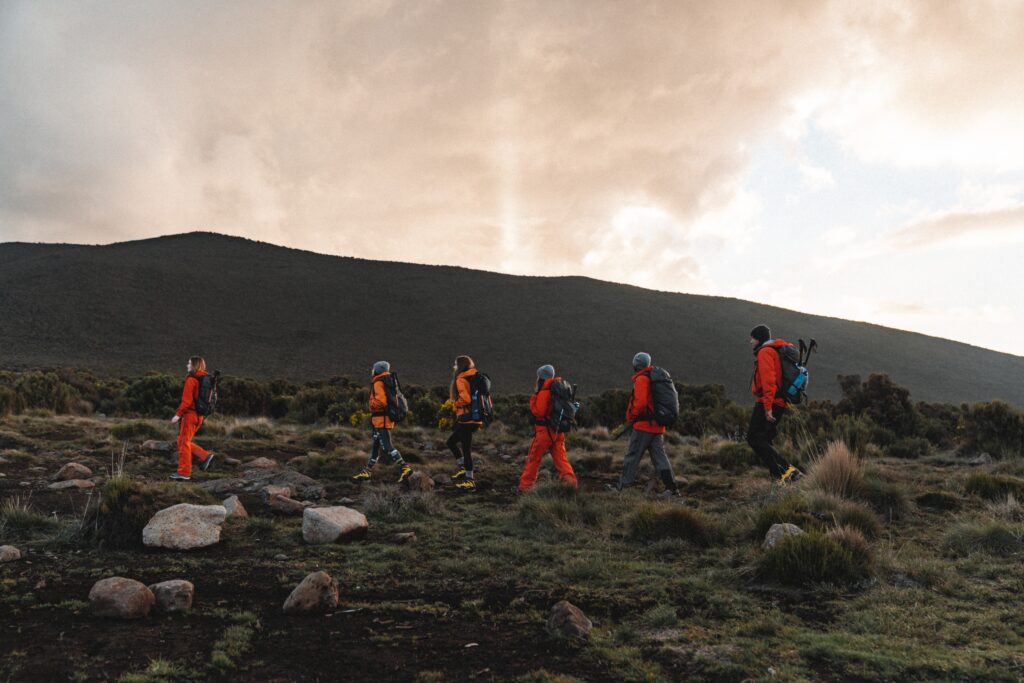
Mount Kilimanjaro lies in an equatorial climatic zone, with a big and little wet season separated by the dry season. However, there’s never a 100% assurance of clear skies. April-May is the “big” wet season, and November is the “little” wet season, although the start and end dates of the rains are impossible to predict with high certainty.
Climbing Kilimanjaro in December and January
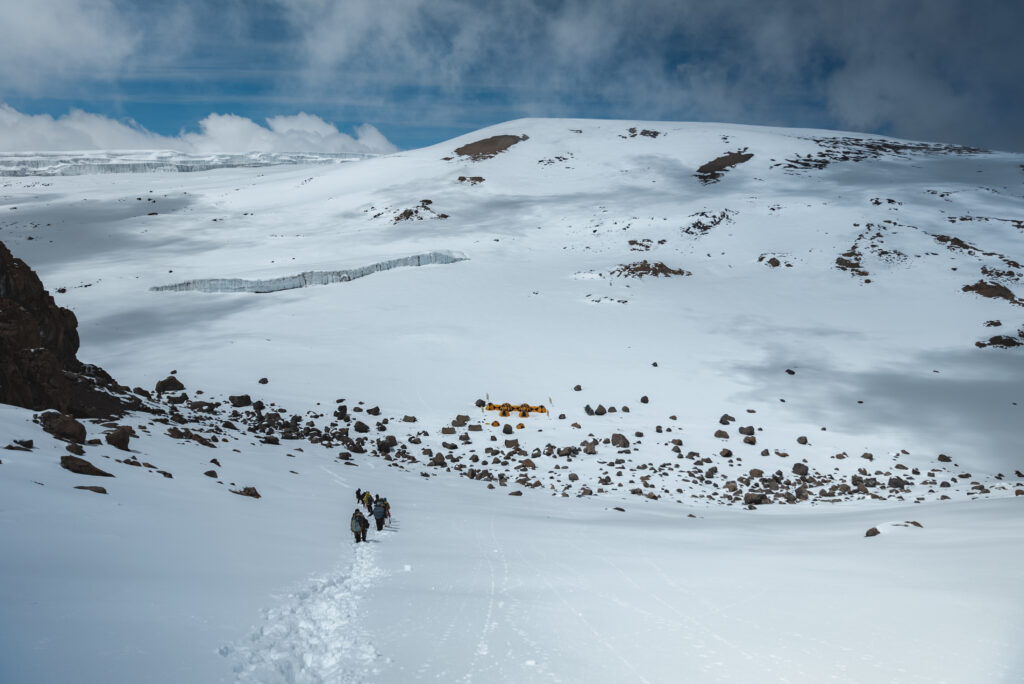
Christmas and New Year are during the second busiest climbing season. The traffic is exceptionally high, and the rainy weather may last into mid-December, with a chance of a “white Christmas. Additionally, rain and thick clouds are likely at lower altitudes.
Another issue with climbing Kilimanjaro in the winter is that it’s hard to take training hikes if you live in the northern hemisphere before you arrive.
Trekking During the Shoulder Seasons

The Mid-January to mid-March and June-July shoulder seasons are often overlooked. If the weather holds, this time of year offers an excellent balance between weather and crowds. The days are generally dry, although occasional rains may happen. The weather is less predictable towards the end of March and early June, which is something to bear in mind.
Using a premier guide service when climbing Kilimanjaro is key to utilizing shoulder season ascents. You’ll want to look for a company that offers complete gear rental if the weather changes, with the option to add additional porters to carry the unexpected weight.
Trekking During the Rainy Seasons
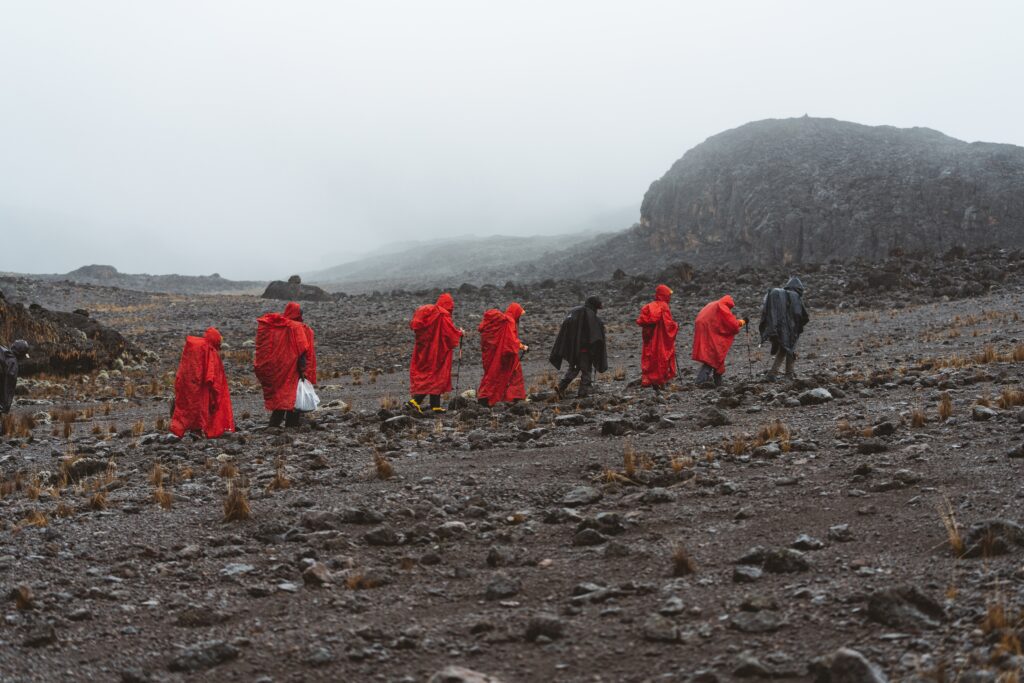
The reason seasons are generally April-May and November. Trekking during the wet season requires more equipment and the rain makes everything slower, slicker, and riskier. However, strong, experienced, and well-equipped climbers will be rewarded with stunning views of the snow-capped peak, reduced crowds, and laying down fresh tracks on virgin snow.
Kilimanjaro Temperatures at Altitude
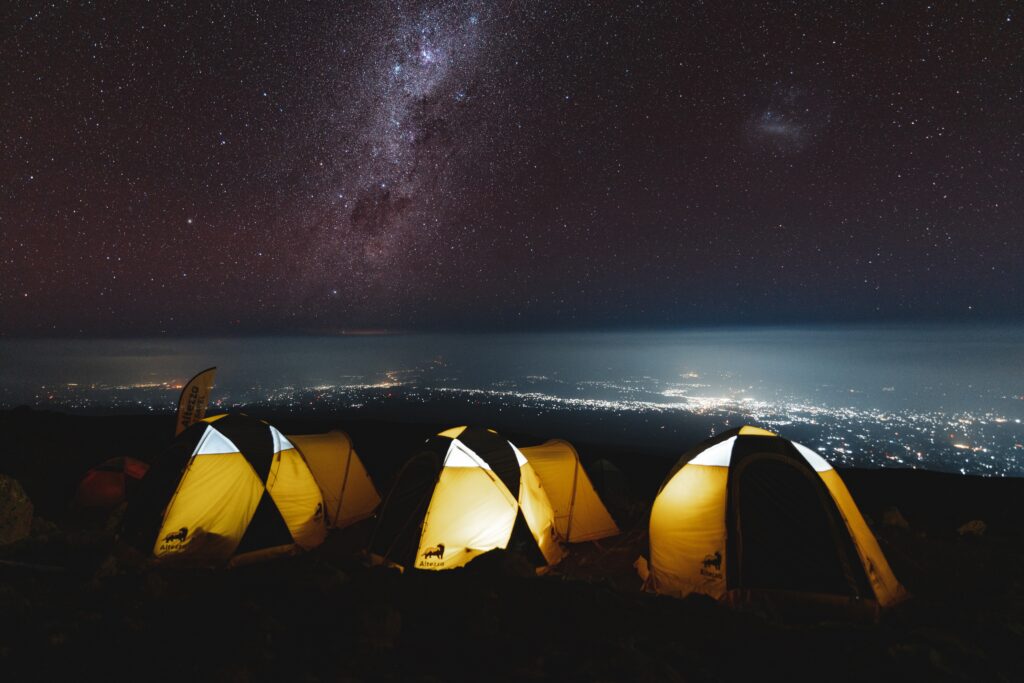
The temperature generally drops by five °F for every 1000′ of elevation change. Additionally, there are more wind and dynamic weather patterns the higher you get on the mountain. The weather on Mount Kilimanjaro correlates with the four distinct climatic zones. They are as follows:
Rainforest Zone
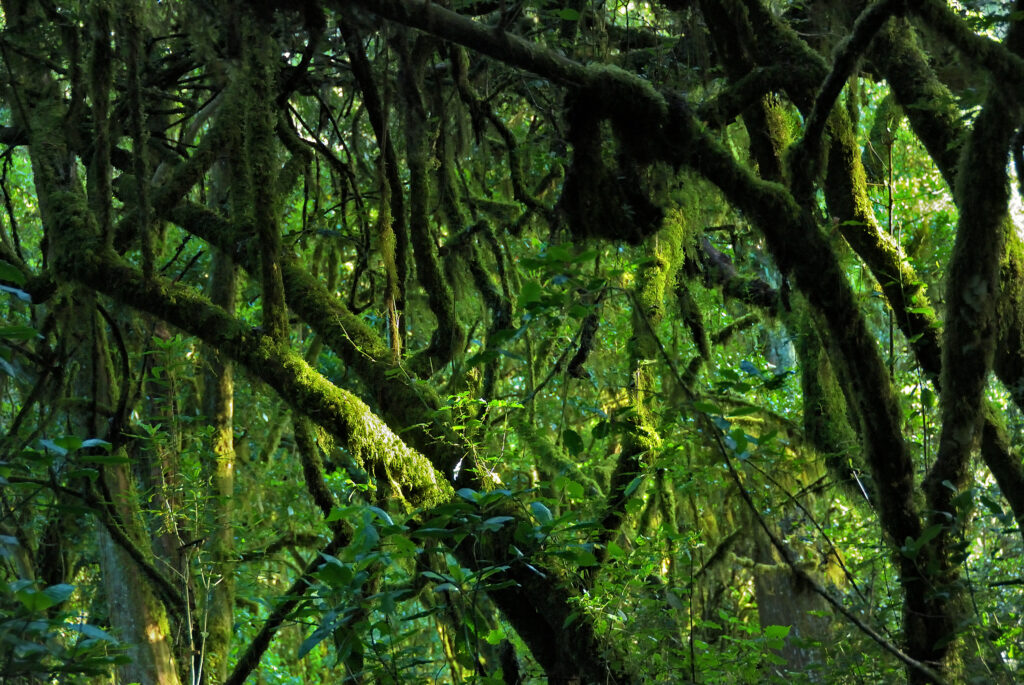
The rainforest zone (2,500′ -10,000′) is warm and humid with dense, green vegetation. At 9,500′, the temperatures average 55 – 60 °F (70 -75 °F during the daytime). Risks of altitude sickness increase above 8,000′, and by the time you reach 10,000′, you’re down to 68% of the available oxygen at sea level. You’ll likely spend the first day or two of your climb in the rainforest zone with shorter acclimation hikes to higher elevations during the day.
Low Alpine Zone
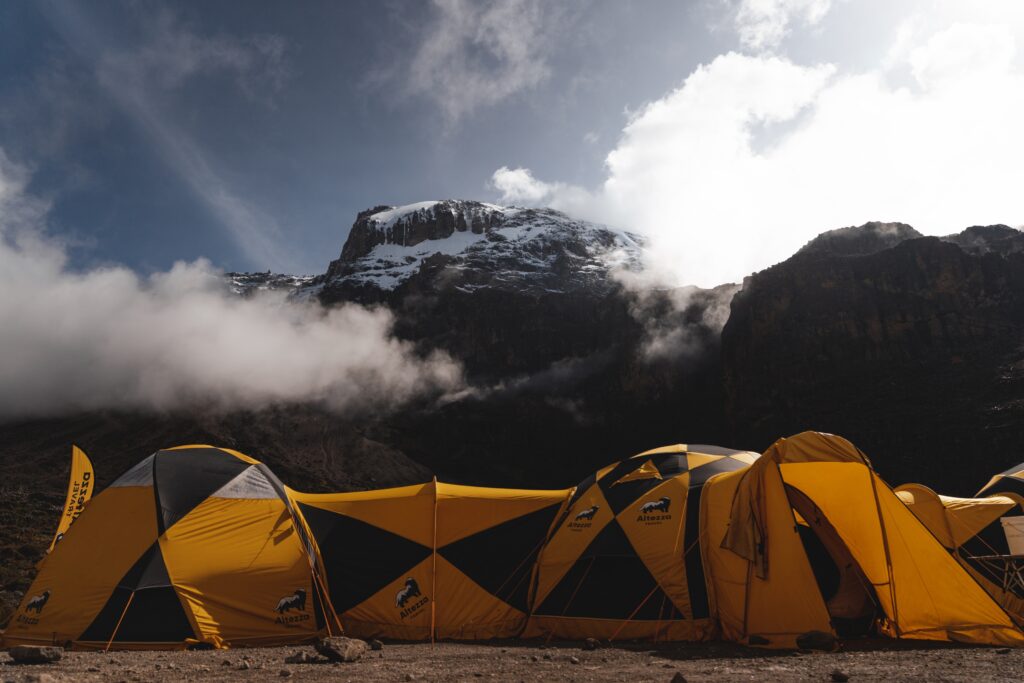
The low alpine zone (10,000′ -14,000′) is a semi-arid area with vegetation becoming scarcer the higher you climb. At 12,000′, the average temperature ranges from 40-50°F (60-70°F during the daytime). The available oxygen is exponentially decreasing with altitude, and you’re down to 59% of the available oxygen at sea level at 14,000′. These factors are why it’s considered a challenge to summit 14ers. You’ll likely spend several days in this zone as you continue to acclimate, so having sufficient warm clothes, including spares if they get wet, is paramount.
High Alpine Zone
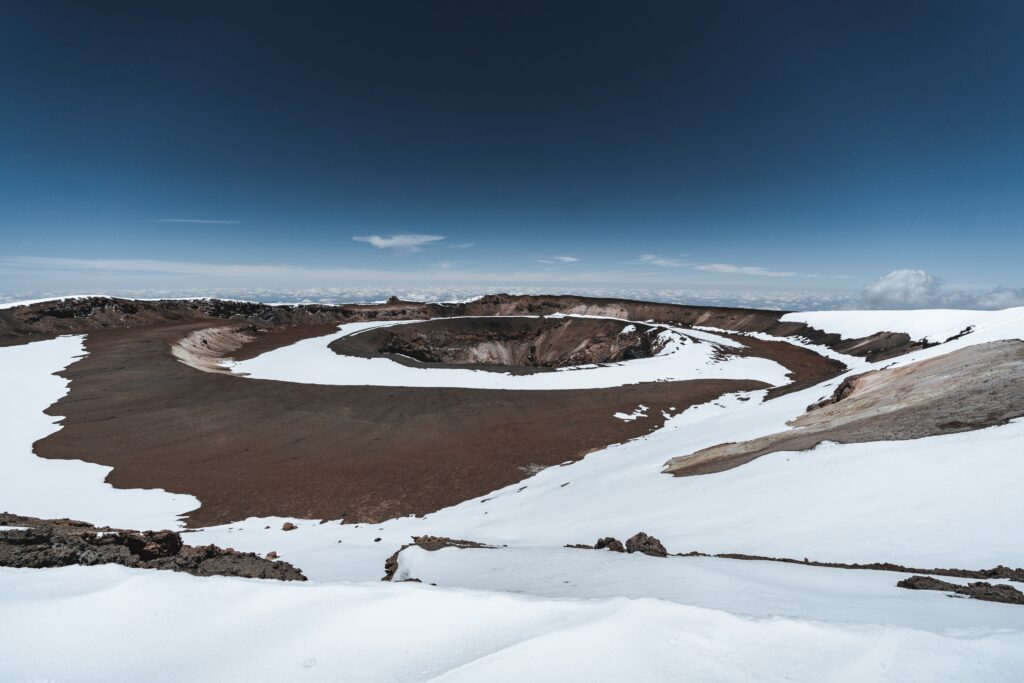
The high alpine zone (14,000′ – 16,500′) is desert-like, with very little vegetation. The average temperature here hovers around freezing, but the days remain warm while the sun shines. Expect to spend a couple of days acclimating and traversing this zone. You’ll notice that each successive climate zone encompasses a smaller elevation band, yet you’re spending similar times in each one. That’s because you naturally travel slower the higher you climb, and acclimating becomes even more critical.
Glacial Zone
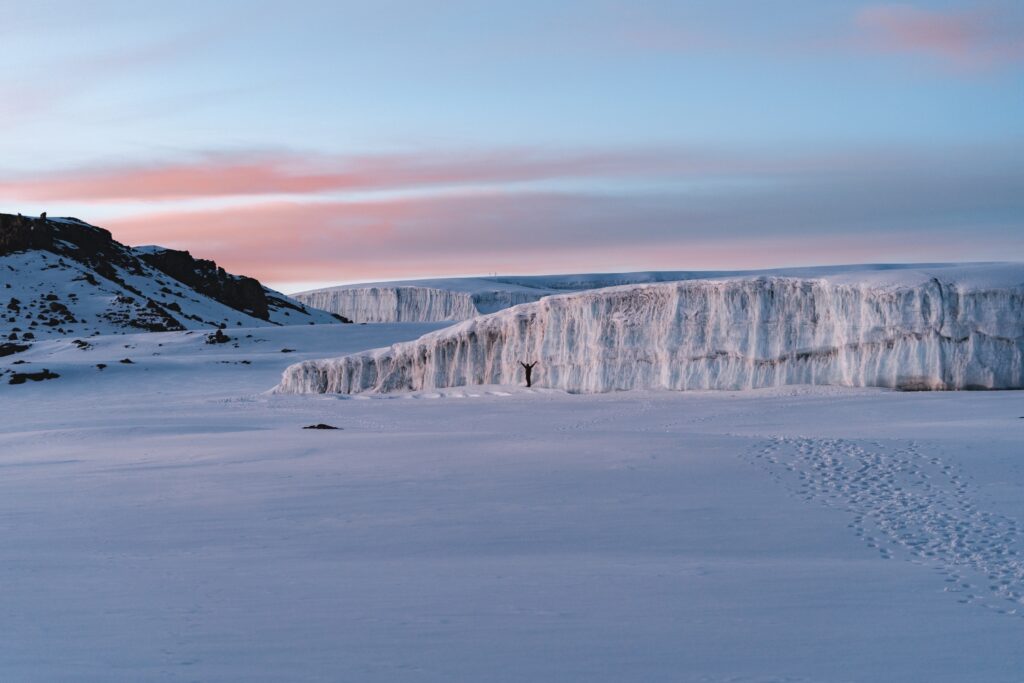
The summit of Mount Kilimanjaro (19,341′) lies in the glacial zone (above 16,500′) with average temperatures around 20°F. The summit push starts at midnight when the temperature drops below 0°F, and the wind gusts with a biting vengeance. Kilimanjaro is the world’s tallest free-standing mountain rise, and the sunrise at the summit is absolutely worth it. Even though the Kilimanjaro summit is well below the “death zone” at 26,000′ (too high to sustain human life), some elite tour companies still have supplemental oxygen available as there’s only 40% of the available oxygen at sea level in the air on the Roof of Africa.
Routes up Mt Kilimanjaro
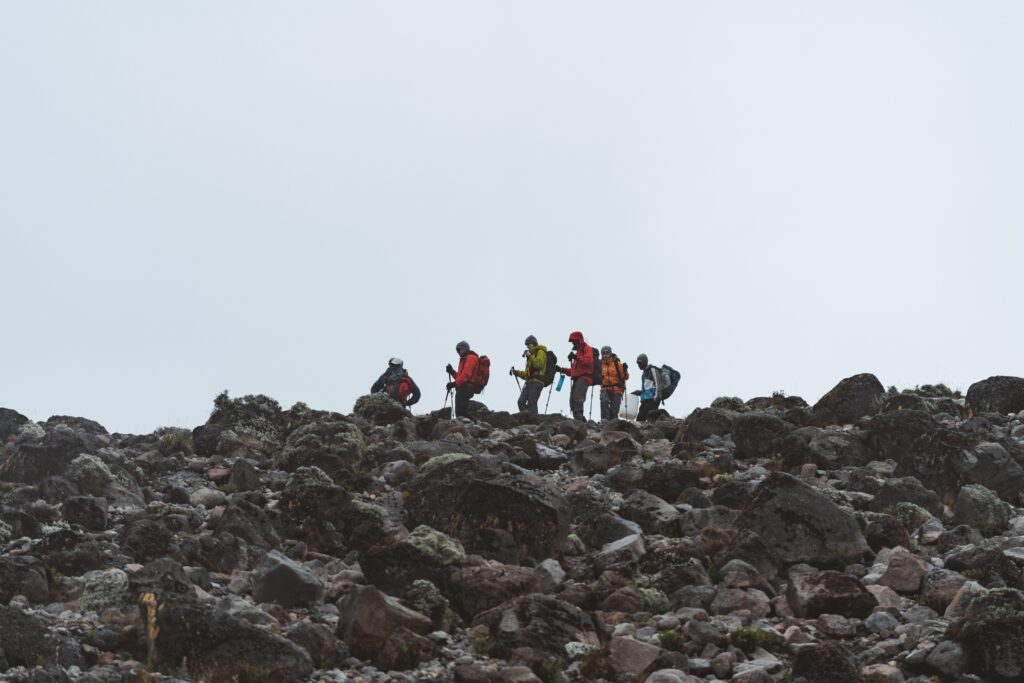
There are six routes up Kilimanjaro to Uhuru Peak (Swahili for freedom). Even though it’s considered one of the easiest of the Seven Summits, your climbing route is essential and intrinsically connected to the best time to climb Mt Kilimanjaro.
Kilimanjaro Climbing Routes:
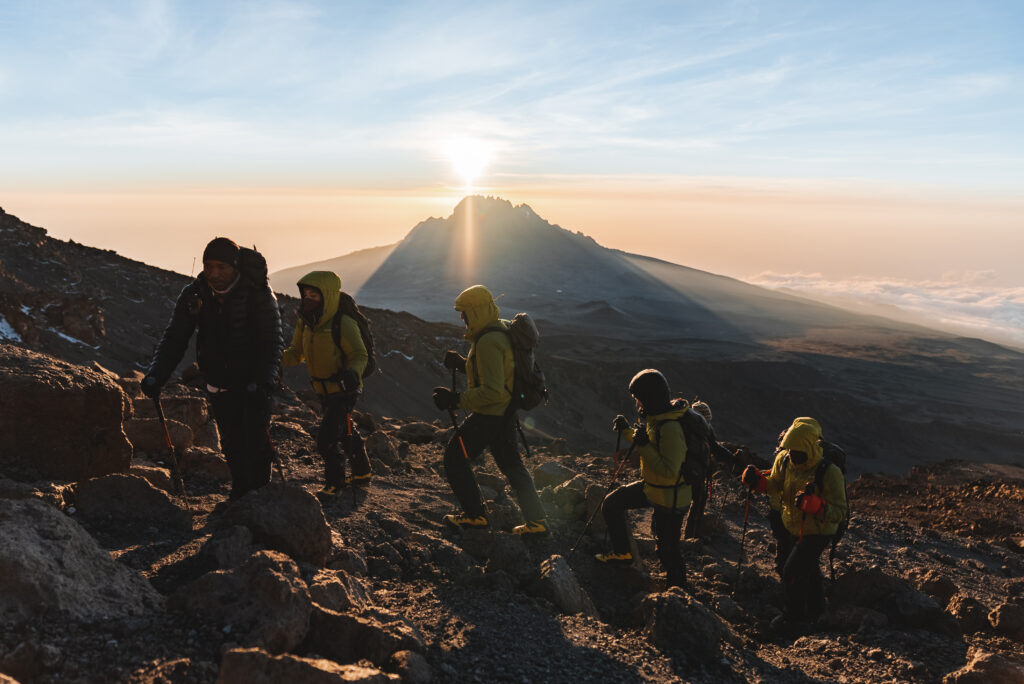
- Marangu Route is the most popular route that gets crowded during the peak season. It’s the only route where you stay in huts, which makes it an excellent choice for the rainy season and relatively inexpensive. This allows you more budget to rent additional gear for your ascent.
- Machame Route is the second most popular because of its beautiful rainforest and easy access. It’s an excellent choice for the shoulder season, where you can balance the rain (and mud) with the crowds.
- Lemosho Route has the highest success rate and a smooth and gradual climb, making it a good choice for all seasons.
- Rongai Route is the only route on the northern side. It is relatively uncrowded and doesn’t join another route until the final camp before the summit, which makes it an excellent choice for the peak climbing seasons.
- Umbwe Route is more challenging than the other ones because it follows a steeper trail. During the wet season, this trail becomes particularly arduous.
- Northern Circuit Route is the longest and the newest route up Kilimanjaro. It’s also the most expensive and one of the least crowded, which makes it an excellent choice for the high seasons.
Climbing Kilimanjaro: Essential Information | Altezza Travel
Check out Altezza’s comprehensive YouTube video guide! This video provides you want to know, with information about the seasons, gear, and an overall idea of what the climb will entail.
Final Thoughts on the Best Time to Climb Mt Kilimanjaro
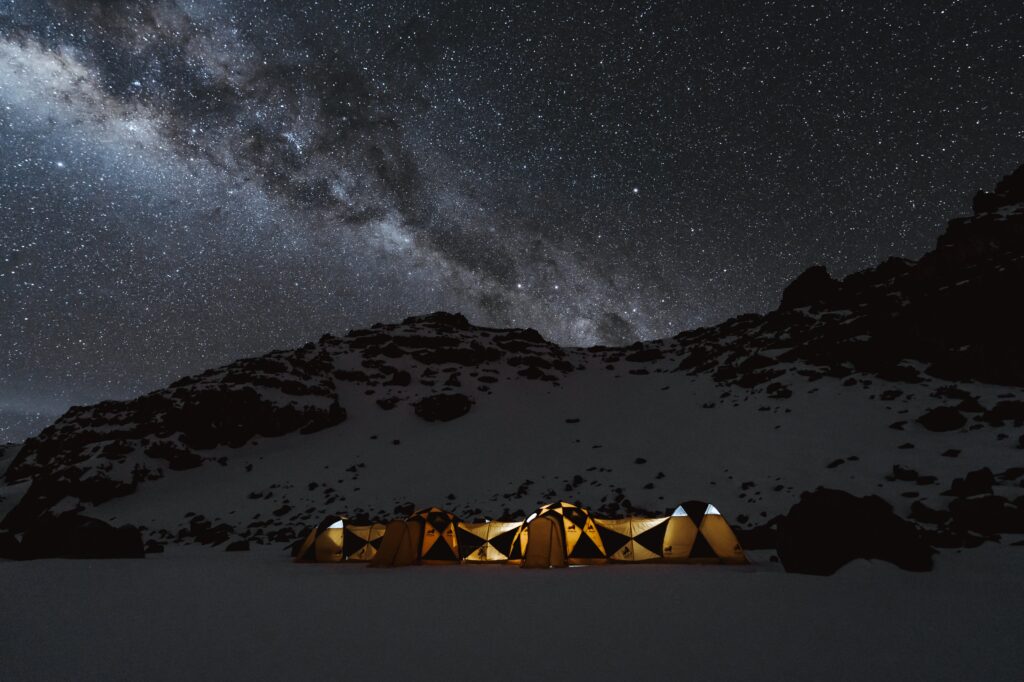
There is no one “best time to climb Mt Kilimanjaro” because the crowds tend to follow the best weather and holiday vacations. It also depends on your guide service, available training hikes, and trail choice. We recommend talking to a reputable guide service and being honest about your experience, conditioning, training, and crowd tolerance.
They should be able to recommend the best time and route for you. It’s also an excellent qualifying conversation to pick a guide service to climb with on one of the world’s best transformative adventures. If they are dismissive, unprofessional, or unresponsive, keep contacting more companies until you find one that resonates with you.
Written in Partnership with Altezza Travel.
Like it? Pin it for later on Pinterest!
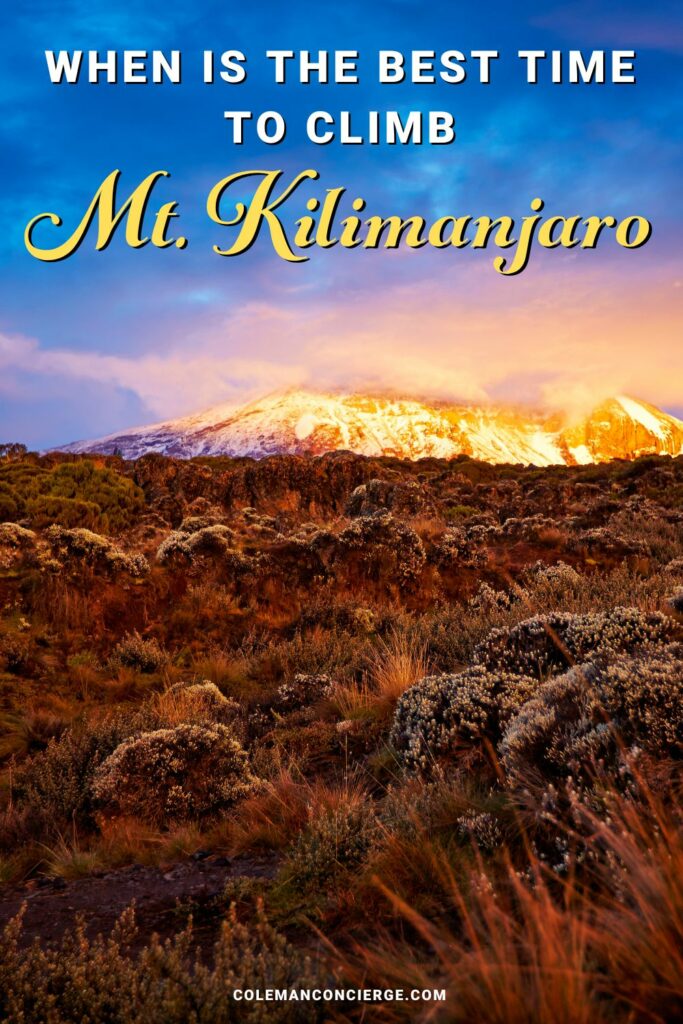
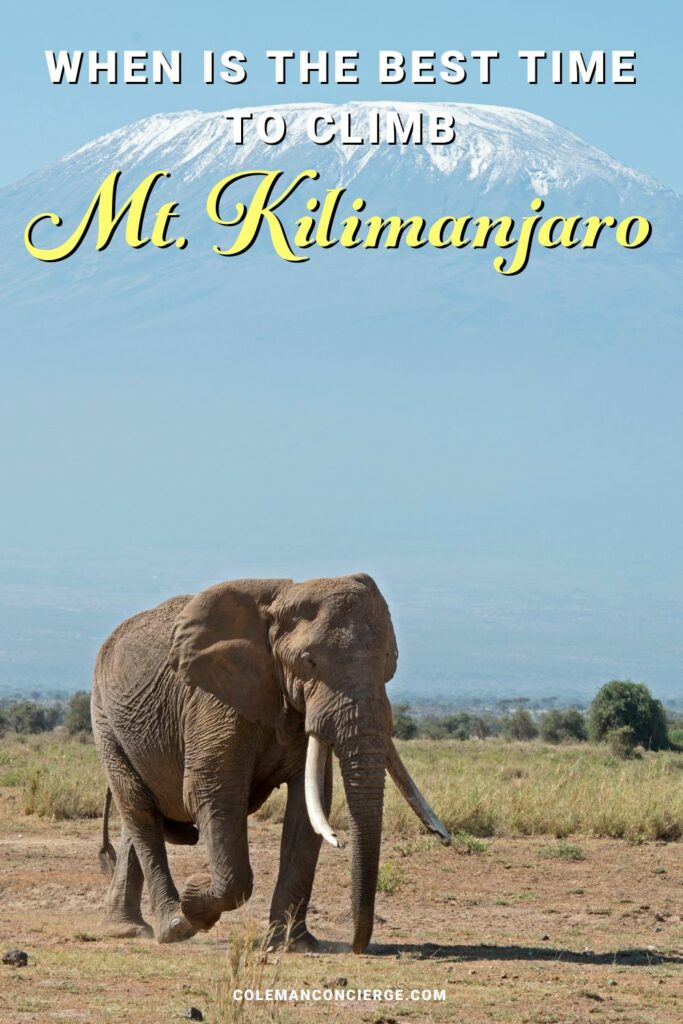
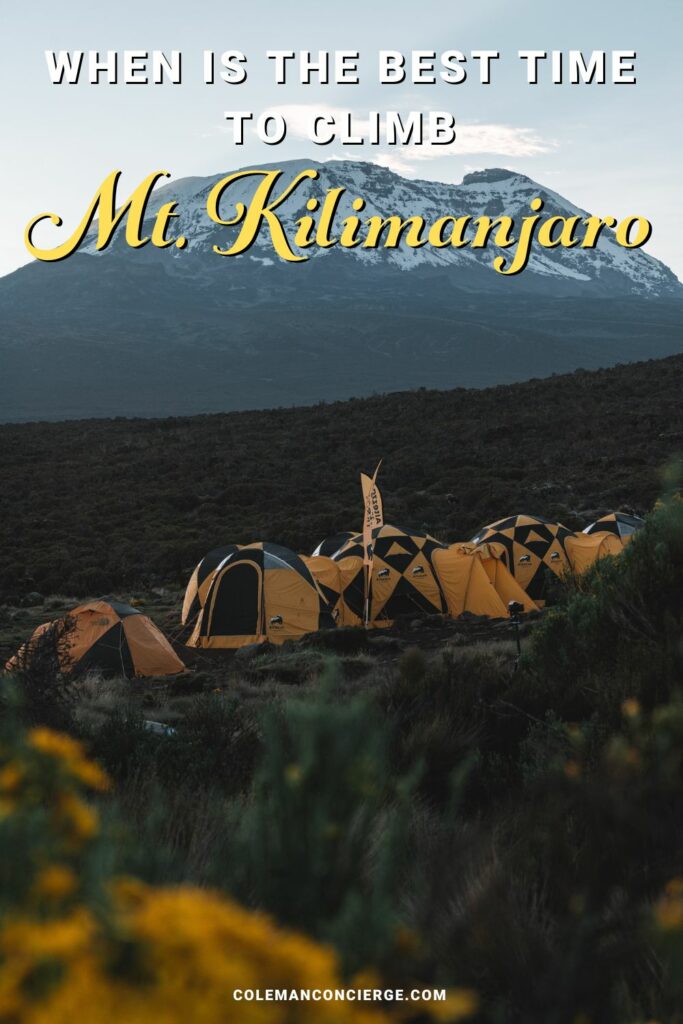
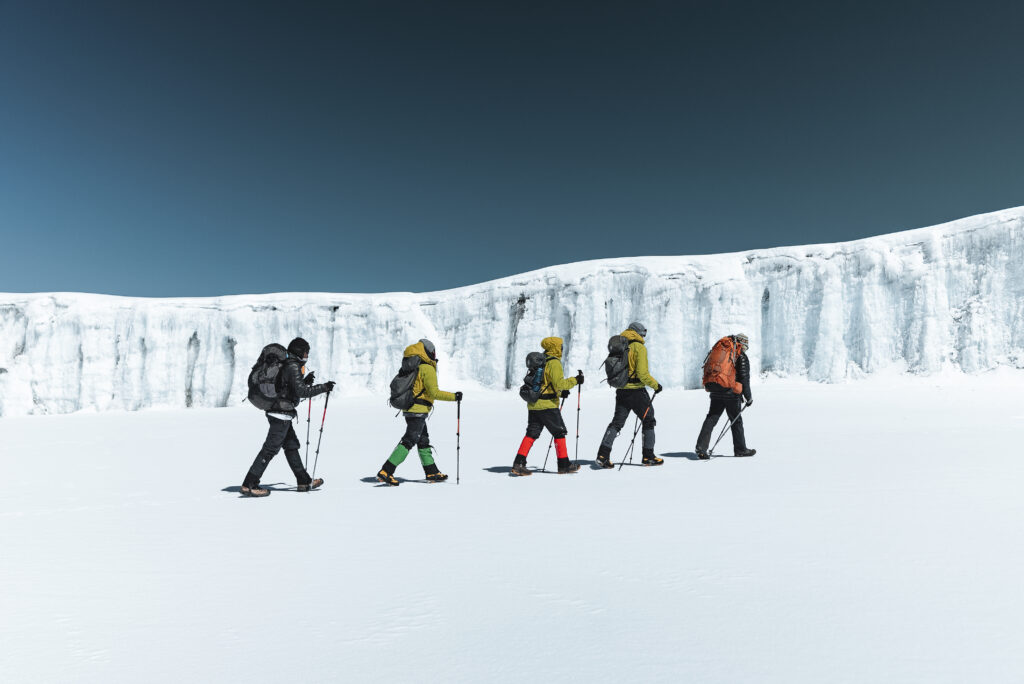

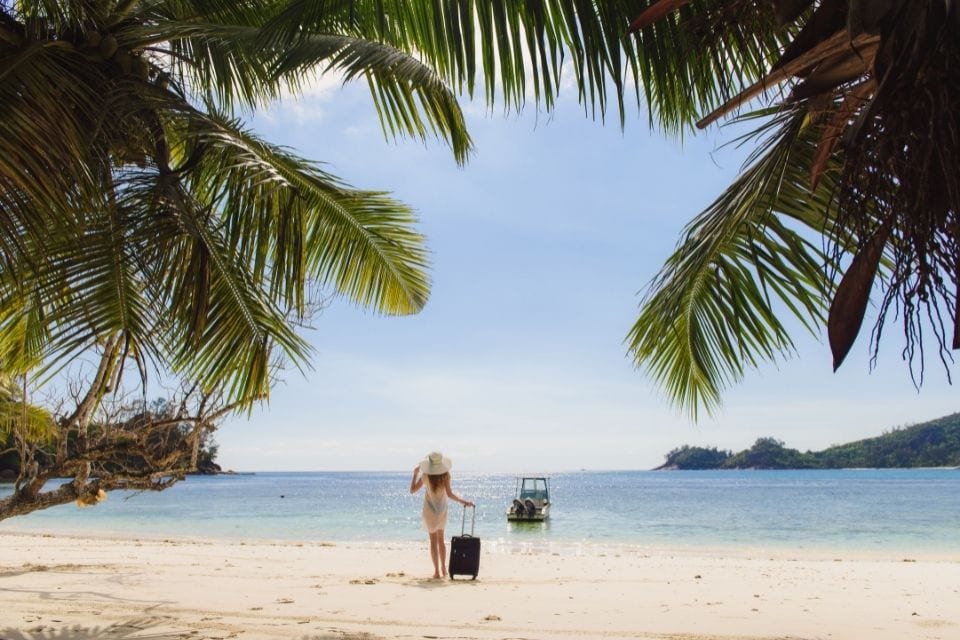
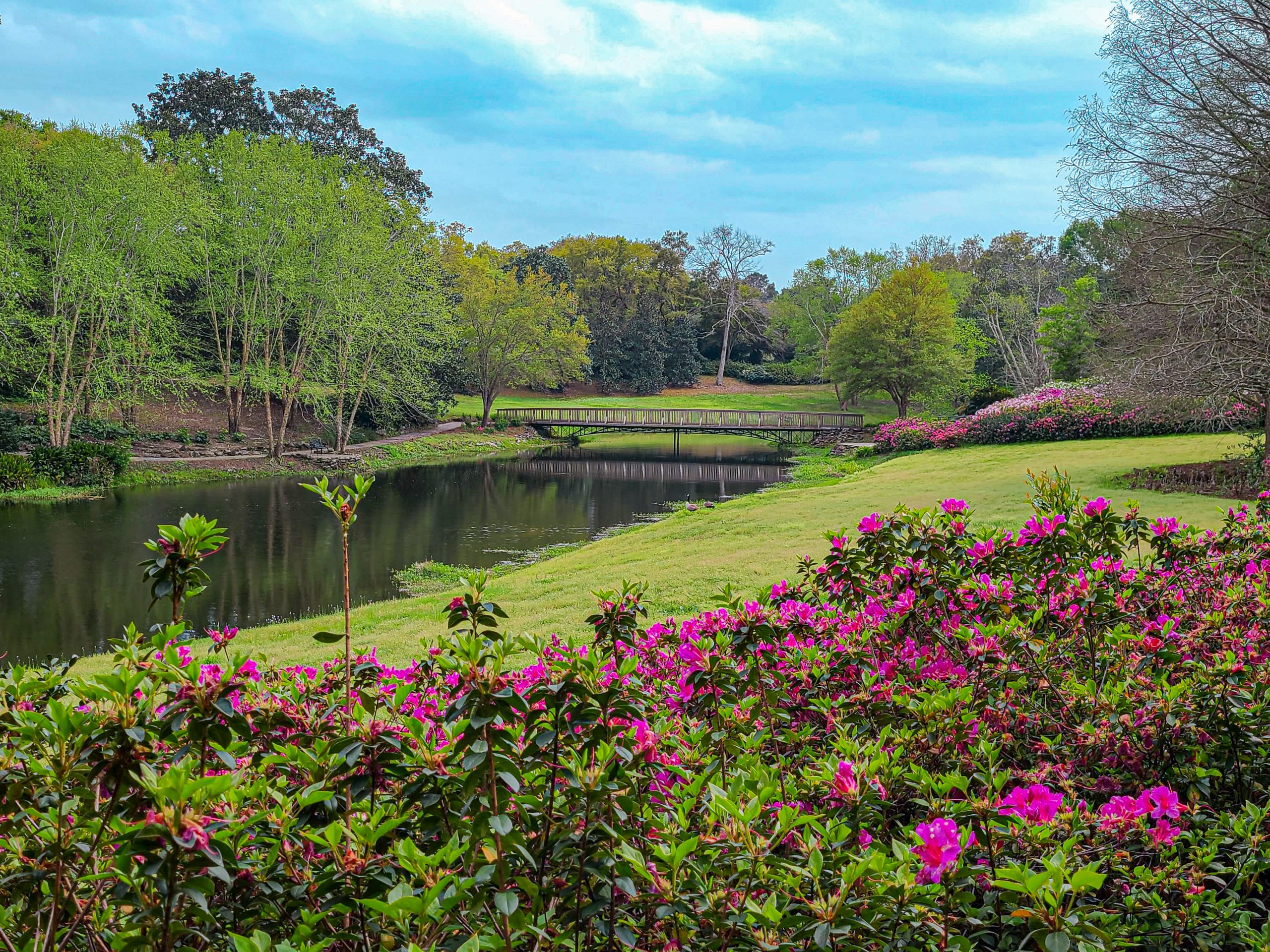
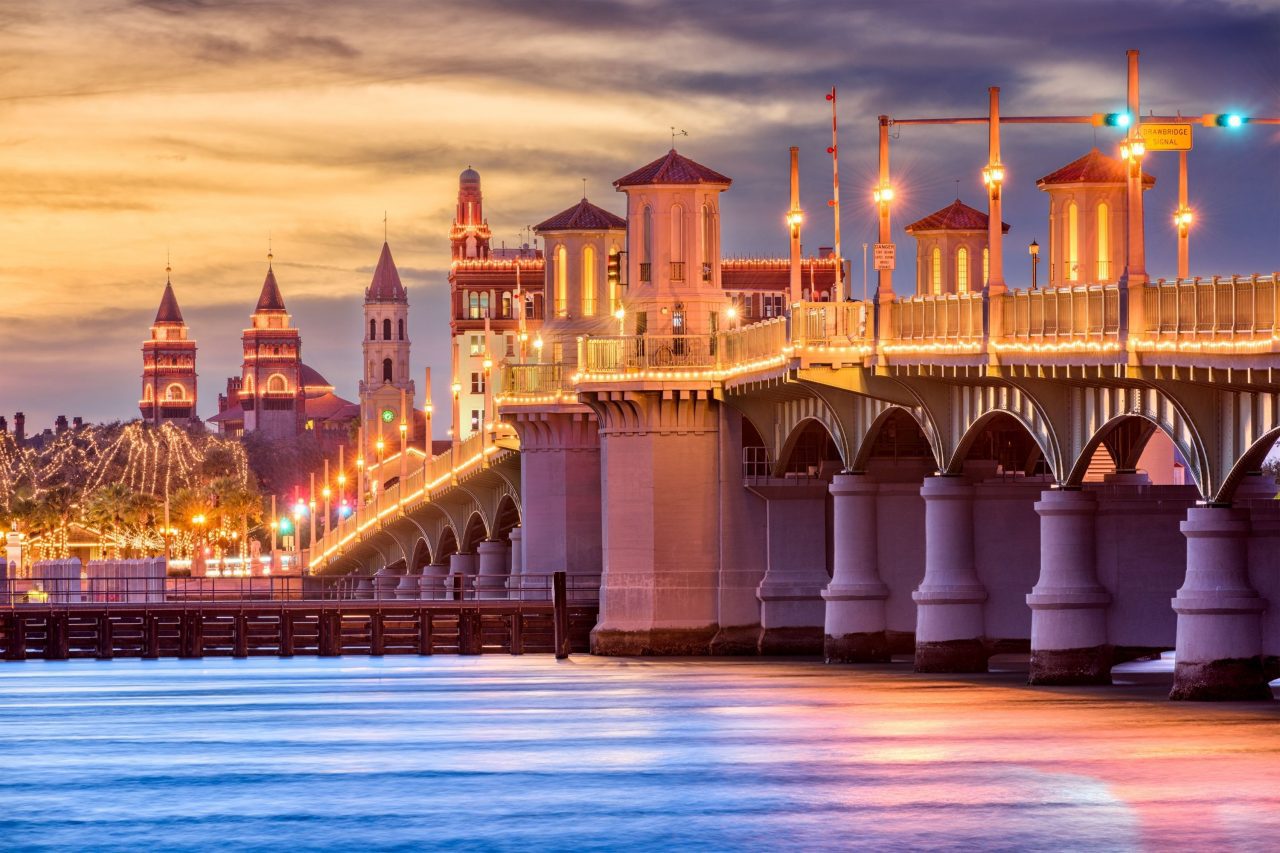
 Hi! We are Jenn and Ed Coleman, and together we are Coleman Concierge. It is our goal to inspire you to get out, expand your world, and to seek adventure, even in your own backyard.
Hi! We are Jenn and Ed Coleman, and together we are Coleman Concierge. It is our goal to inspire you to get out, expand your world, and to seek adventure, even in your own backyard.

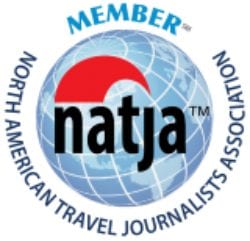
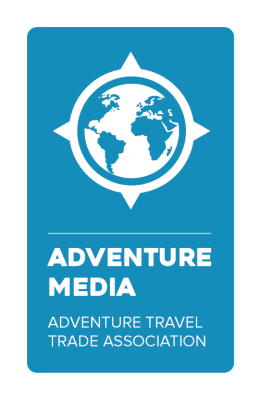
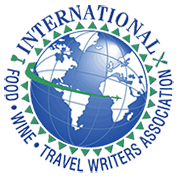


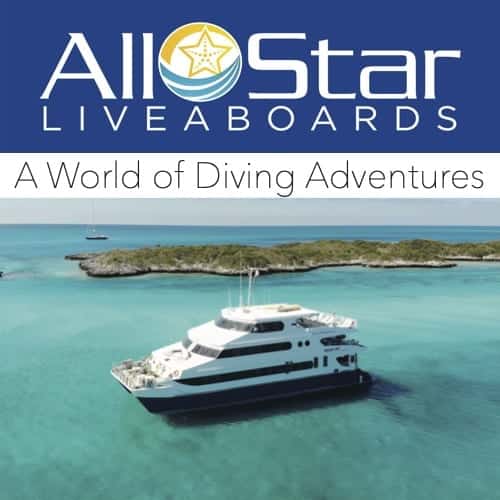






One Response
Climbing the mountain Kilimanjaro is one of the fun things to do in Africa. I would love to hike it. However, I am unsure if I would camp there as I do not like sleeping outdoors